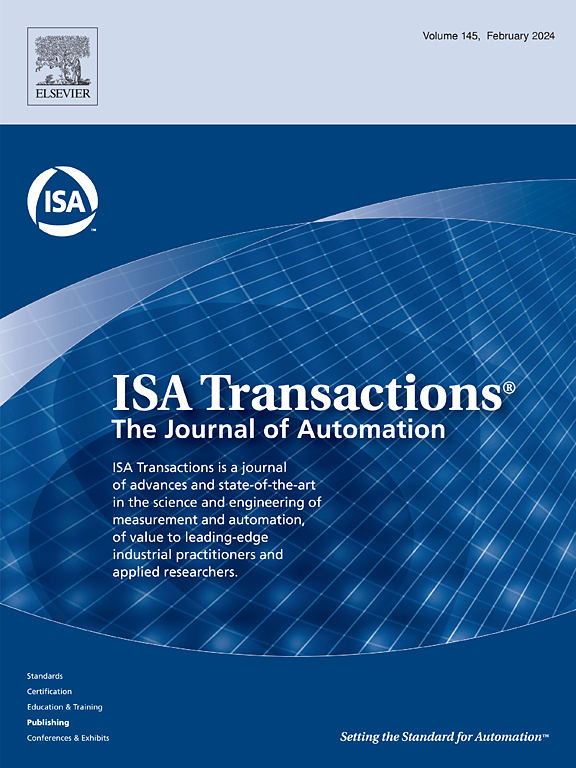带故障传感器的双向AGV传输系统的诊断约束容错控制。
IF 6.3
2区 计算机科学
Q1 AUTOMATION & CONTROL SYSTEMS
引用次数: 0
摘要
本文探讨了双向自动导引车辆(agv)的一个新挑战:在潜在传感器故障中进行监督控制。该方法采用基于事件的控制架构,在监督控制理论(SCT)的指导下,实现agv的无阻塞路由。与大多数假设事件完全可观察的路由方法不同,本文研究了由于传感器故障或干扰而导致事件不可观察的情况,这可能会影响监督器的效率。本文讨论了AGV系统中两个新的关键问题。首先,它从离散事件系统的角度考察了自动运输系统的诊断问题。其次,提出了一种通过诊断层增强的控制体系结构,以提高容错性。自动机和语言的理论被用来解决控制和诊断问题。该方法提供了一种系统的方法来设计agv共享路径的规范和诊断自动机。新的规范自动机通过同步转换保护集成了来自诊断自动机的信息,保证了一个健壮的监督器的合成,即使在可观察性受到损害时也能避免死锁。通过仿真验证了该结构的有效性。此外,引入了一种基于随机时间自动机的建模框架,利用模型检验来评估系统可靠性,将可靠性重新定义为避免死锁的概率。本文章由计算机程序翻译,如有差异,请以英文原文为准。
Diagnostic-constrained fault-tolerant control of bi-directional AGV transport systems with fault-prone sensors
This paper explores a novel challenge regarding bidirectional Automated Guided Vehicles (AGVs): supervisory control amidst potential sensor faults. The proposed approach uses an event-based control architecture, guided by Supervisory Control Theory (SCT), to achieve non-blocking routing of AGVs. Unlike most routing approaches assuming full event observability, this paper investigates scenarios where events might become unobservable due to sensor faults or disturbances, which may affect the supervisor efficiency. The paper addresses two new key issues regarding AGV systems. First, it examines the diagnosis problem of automated transport systems from a discrete-event systems perspective. Secondly, it presents a control architecture enhanced with a diagnostic layer to improve fault tolerance. The theory of automata and languages is used to address control and diagnostic issues. The proposed methodology offers a systematic approach to design specification and diagnostic automata for routes shared by AGVs. The new specification automata integrate information from the diagnostic automata via synchronized transition guards, guaranteeing the synthesis of a robust supervisor that avoids deadlocks even when observability is compromised. The efficiency of the proposed architecture is examined and showcased by simulation. In addition, a modelling framework based on stochastic timed automata is introduced, applying model checking to assess system reliability which is redefined as the probability of deadlock avoidance.
求助全文
通过发布文献求助,成功后即可免费获取论文全文。
去求助
来源期刊

ISA transactions
工程技术-工程:综合
CiteScore
11.70
自引率
12.30%
发文量
824
审稿时长
4.4 months
期刊介绍:
ISA Transactions serves as a platform for showcasing advancements in measurement and automation, catering to both industrial practitioners and applied researchers. It covers a wide array of topics within measurement, including sensors, signal processing, data analysis, and fault detection, supported by techniques such as artificial intelligence and communication systems. Automation topics encompass control strategies, modelling, system reliability, and maintenance, alongside optimization and human-machine interaction. The journal targets research and development professionals in control systems, process instrumentation, and automation from academia and industry.
 求助内容:
求助内容: 应助结果提醒方式:
应助结果提醒方式:


